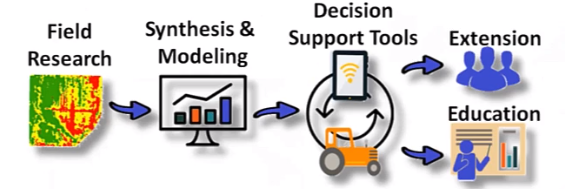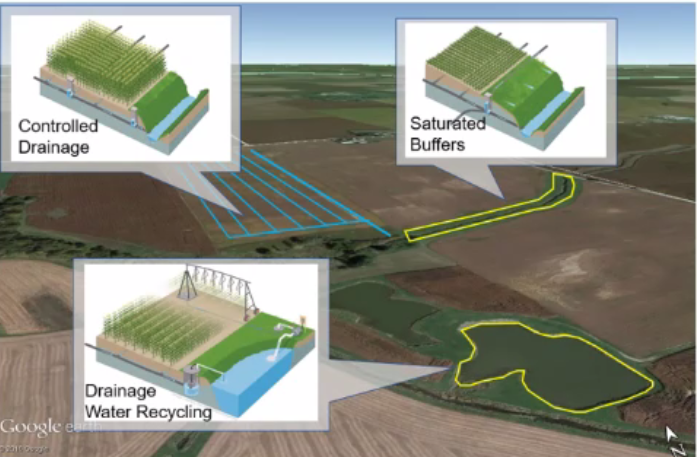
In this week’s webinar, Jane Frankenberger with Purdue University, presented her work with the Transforming Drainage project. The project was very successful in finding the benefits and costs of storing drainage water in the landscape. The National Ag Library Ag Data Commons is home to the database from the subsurface drainage research sites where the drainage storage practices were studied. The results from these studies can be easily accessed using the data visualization tool the project developed. This project overall brought together and synthesized research, produced results that could be easily accessed, and increased education and adoption.

Frankenberger highlighted the advances made by the project in various water storage practices. Different field practices that were highlighted to help control water in the landscape were controlled drainage, saturated butters and drainage water recycling. The goal of transforming drainage is to reduce uncertainty and risk related to water availability and reduce nutrient loss from agricultural fields.

Education tools available
The controlled drainage sustainability tool is just one of many available to the public. This one is used to identify land in the Midwest that may be ideal for controlled drainage or sub irrigation. This tool is used by farmers, advisors, educators and those in the conservation field.
Drain spacing tool, drainage rate calculator, controlled drainage sustainability tool, Field Nutrient Loss app, and interactive maps showing the likely extent of agricultural drainage across the Midwest are all tools that Frankenberger discusses in this weeks webinar.
Be sure to check out the webinar recording to learn more!